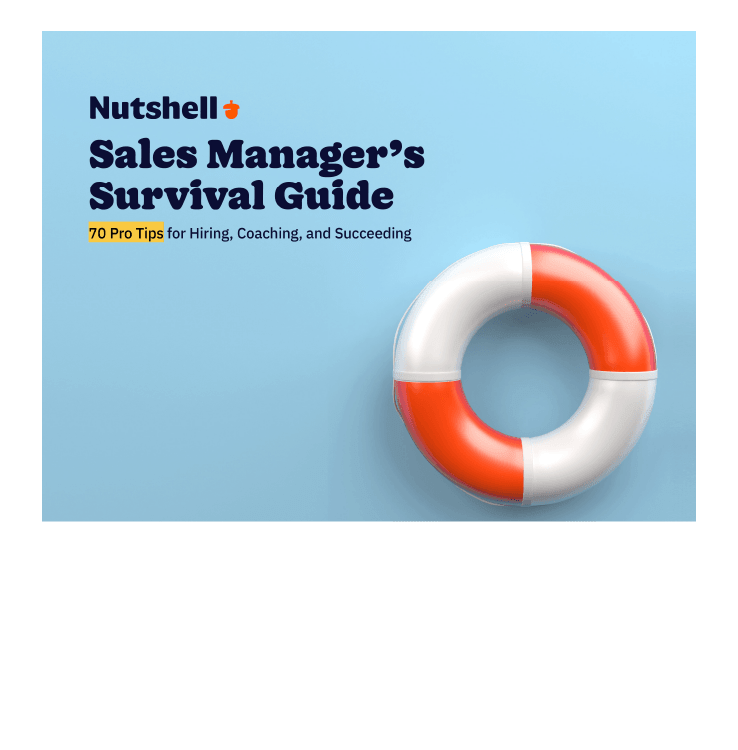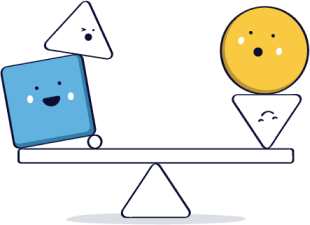
For every CRM success story, there’s a complete and utter failure. Many CRM initiatives for sales reps are eventually abandoned or fail to generate a positive return on investment. Low user adoption is often cited as the main culprit.
According to MHI Global, only a third of CRM projects are adopted by 90% or more of their sales teams. The rest face an uphill battle, with sales reps drifting back to using spreadsheets and emails to manage their customer communications.
So, what’s causing these CRM platforms to be rejected by the people they’re supposed to be helping? Here are the nine most common reasons why sales reps quit their CRMs.
Get 70+ expert strategies for sales management success in our Sales Manager’s Survival Guide.

If a sales manager forces a CRM onto their sales team without any notice or discussion, sales reps will treat it with suspicion: They didn’t ask for this thing, they don’t know how it works, and the benefits of the CRM system to their daily lives are never properly explained.
In fact, CRM can appear harmful to sales reps who see it purely as a management tool to monitor them and steal their book of business—which is why many salespeople choose to maintain their contacts outside of the company’s CRM. As a result, a whopping 79% of opportunity-related data gathered by sales reps is never entered into their CRMs, according to ESNA.
That’s not a failure of CRM— it’s a failure to consider the sales reps’ needs during the buying process. Before implementing a CRM solution, sales managers should do the following:
If sales reps feel like they have no say in the matter, they’ll rebel against the system from the get-go.
“I’m not a computer guy. What is this propeller-head garbage?”
When you’ve been working off of cocktail napkins your entire career, the idea of learning a complicated software platform is daunting. And if you have to learn it by yourself, forget it. You might as well ask your reps to build a rocket ship and fly it to Mars.
Sales reps aren’t software experts, and requiring them to use a complex CRM system sets them up for failure.
The widespread confusion caused by complex CRM platforms—especially for first-time CRM users—explains why a study by SuperOffice found that less than 40% of the companies that implement CRM systems see them used at full capacity.
Companies pour money down the drain every month, paying for feature-loaded CRMs when their sales reps barely understand how to perform basic tasks.
Inevitably, the CRMs that are the most successful are the ones that are intuitive and make sense out of the box. InsideCRM found that 55% of sales professionals feel that ease of use is the most important feature of a CRM.
If a CRM platform comes with a long learning curve, sales reps won’t buy in.
Proper training is the secret sauce to CRM implementation. Sales reps shouldn’t be expected to use any customer relationship management system without a structured onboarding period where every rep is guided through the CRM’s most essential features.
Unfortunately, this rarely happens. Instead, sales managers hand off the CRM to their teams with little formalized instruction. Sales reps might be taught the basics during the initial rollout, but new hires often don’t get the same onboarding attention, and if they run into roadblocks along the way, it’s up to them to find a solution.
For a CRM to have a fighting chance at being fully adopted by a sales team, it has to provide free customer support with a team of in-house experts who can offer guidance and answer technical questions by live chat or email.
But with some sales platforms, ongoing support is a paid add-on that isn’t available to the users who need it most—which leads to a mass exodus of frustrated sales reps fleeing their CRM.
Our interactive worksheet compares the benefits offered by Nutshell, your existing contact management solution, and any other CRMs you’re currently evaluating.

These days, mobile accessibility is non-negotiable. Sales reps who can pull up client contacts on the road and stay notified about ongoing deals have a huge advantage over those who can’t.
If sales reps have no way to update their sales contacts when they’re on the road, scribbling notes into legal pads and email drafts is their best option.
And the odds of those notes being accurately entered into their company’s CRM when they make it back to home base? Not great. CRM systems that only work at the office tend to get dropped like cheap suits.
Related: Nutshell Announces New Mobile App Updates
CRM software is intended to make sales reps’ lives easier by automating manual data entry and providing convenient access to customer contacts. If a CRM can’t do that well, it’s worthless.
According to a sales force automation online company comparison survey conducted by Software Advice, the most common complaint that salespeople have about CRM systems is that they’re too time-consuming.
Of course, much of that added work is the result of sales reps maintaining backup spreadsheets and customer databases “off the books” while entering the bare minimum amount of data required by their managers into their CRM platform.
That’s right: Sales reps will voluntarily double the time they spend on data entry just to avoid using their company’s CRM. And there’s one good reason for that, which we’ll cover in the next point.
So what happens when the majority of CRM projects are never fully adopted by their sales teams, and are used on a semi-regular basis by people who only kind of know how to operate them? Garbage in, garbage out, as they say.
Data Warehousing Institute estimates that data quality problems cost U.S. businesses more than $600 billion a year.
When the average sales database is riddled with inaccuracies, sales reps come to an obvious conclusion: The CRM can’t be trusted, and it’s time to bounce.
Bad data can be a deep hole to dig out of. Improving data quality by removing duplicate records and adding missing data can stop the bleeding. Without regular data cleaning or slightly more aggressive data scrubbing, there’s bound to be bad data on the rise.
But as always, prevention is the best cure. To avoid the curse of bad data and CRM abandonment, a CRM rollout has to be executed well from the beginning. That means:
If you can nail that from the start, you’re golden. If you can’t, your CRM will be a ghost town.
It would be folly to assume that a CRM system is the only software a sales rep needs. Teams often already use other apps before CRM implementation. More often than not, these applications are used company-wide.
Modern CRMs like Nutshell offer integration with thousands of apps that companies use daily. But, implementing a CRM solution that doesn’t integrate with the tools your team already uses could impact CRM adoption rates.
Depending on the type of software, reps may see the lack of integration as a stumbling block, creating an extra step in their workflow. It may also prevent easy collaboration with other departments, leading to data inaccuracies and silos.
Ensuring your new CRM system can work harmoniously with the more critical tools in your current tech stack is essential for full team buy-in.
Sometimes, a one-size-fits-all pipeline or a set of default contact record fields is fine—often, it’s not. Every industry is different, and every company within each industry has different operational needs. That’s why CRMs that offer little flexibility fail to impress.
Without the ability to customize pipelines, activities, fields, dashboards, and more to align with their specific sales process, sales teams will likely find the CRM platform rigid and outdated.
An advanced CRM, like Nutshell, with plenty of customizable features, doesn’t have to cost the earth. A modern, affordable CRM plan can offer all the versatility your team needs to adapt to how you sell.
CRMs aren’t just about capturing and organizing data. Sales reps and managers also need a way to draw reports and analyze data. Sales teams are certainly more effective when they can see where their leads come from or how each stage of the sales pipeline is performing.
On the flip side, if the CRM system’s reporting features are too complex to figure out, sales managers and reps may not even bother. Who wants to spend hours trying to understand how to generate a simple report? That’s time they could have spent engaging with prospects. You can improve your CRM adoption rate by picking a solution that offers straightforward, one-click report generation for standard sales reports but gives you the freedom to create custom reports for deeper insights.
What good is your CRM system if nobody uses it? Invest in a CRM that your team will love and use daily. Nutshell is an industry-leading all-in-one CRM platform designed for sales and marketing teams who want an easy-to-use, reliable, and robust solution.
When you choose Nutshell, you benefit from:
Contact our team today to discover how Nutshell can empower your team and enhance productivity. Or sign up for a free 14-day trial now to give our world-class CRM a test drive.
No problem. To see if Nutshell is the right choice for your sales team, start a 14-day free trial today!


Join 30,000+ other sales and marketing professionals. Subscribe to our Sell to Win newsletter!
 Email & Calendar Sync
Email & Calendar Sync
Use our calculator to add up your total investment of CRM and Add-ons
VIEW ALL PRICING
 Product Info
Product Info Education & Guides
Education & Guides Company
Company